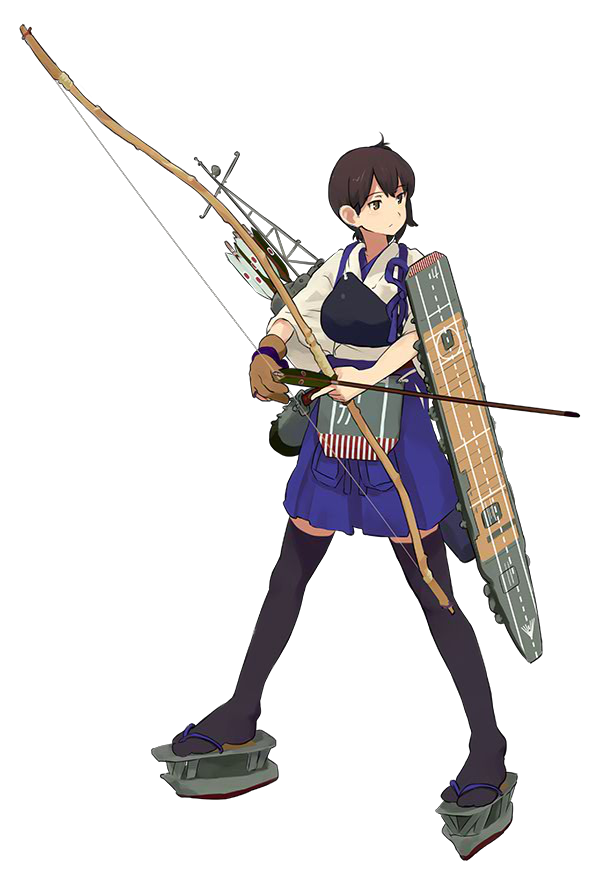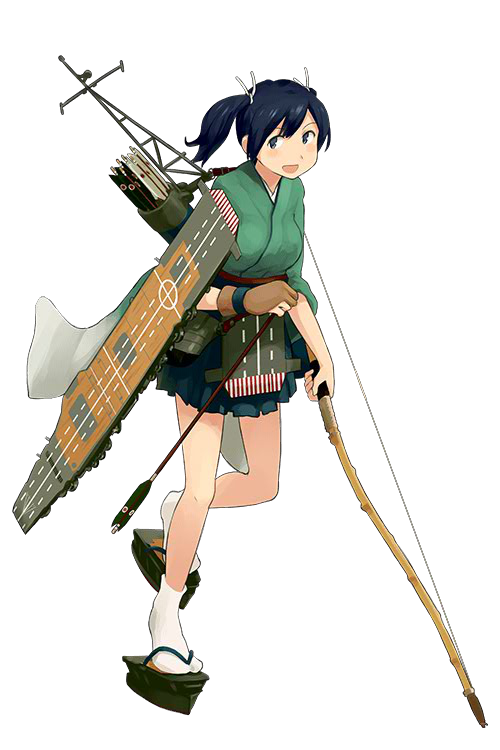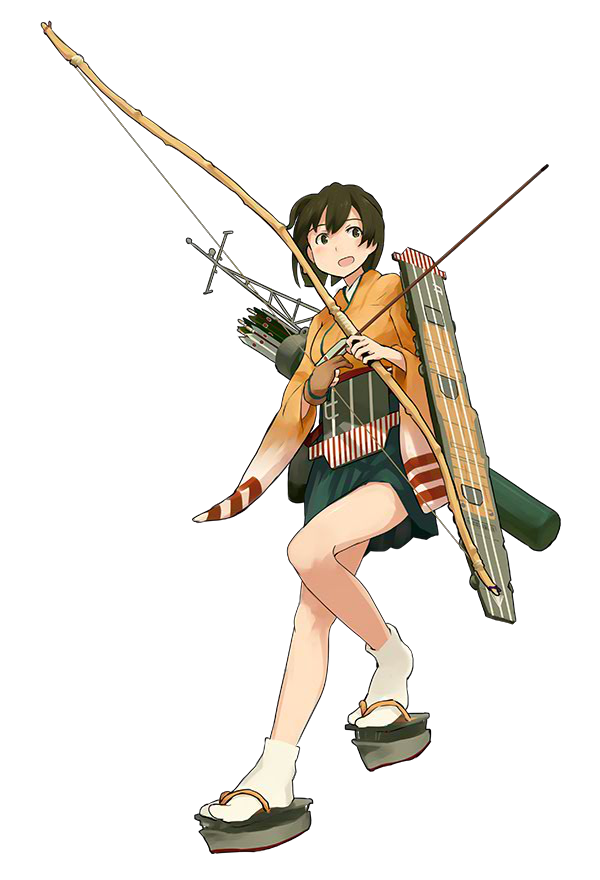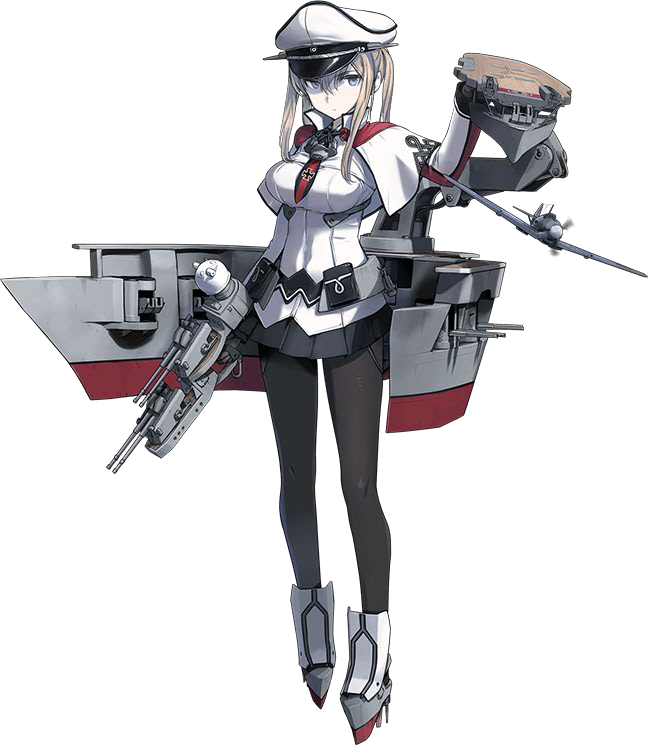
Kaga
Named after the Kaga Province which is now part of the Ishikawa Prefecture in modern-day Japan.
Exploded and sunk after being heavily damaged by dive bombers from USS Enterprise at the Battle of Midway, 4 June 1942, while some survivors suggest that she was scuttled by destroyer Hagikaze. The two squadrons from Enterprise were supposed to attack Akagi and Kaga; however due to a communication error, they both attacked Kaga while only 3 broke off to bomb Akagi.
Originally designed as a Tosa-class Battleship, she was converted into a carrier after the signing of the Washington Naval Treaty in 1921.
Her name was carried first by a 1894 unprotected cruiser sole in her class.

Akagi
cuttled on June 5th, 1942 by IJN destroyers Arashi, Hagikaze, Maikaze, and Nowaki after being heavily damaged by dive bombers from USS Enterprise.
Originally designed as an Amagi-class Battlecruiser, Akagi was converted to a carrier after the instigation of the Washington Naval Treaty in 1921.
She was the first Fleet Carrier commissioned by Japan. (Kaga was launched before Akagi, but was commissioned after her).
Her name literally means "Red Castle", and comes from Mount Akagi in Gunma Prefecture, Japan.
Akagi was the flagship carrier during Pearl Harbor attack.

Souryuu
She was Japan's first purpose built Fleet Carrier.
At speed of 34.5 knots, she was the fastest carrier in the world, along with Hiryuu.
Sunk by dive bombers from USS Yorktown at the Battle of Midway June 4 1942.

Hiryuu
Her name translates to >"flying dragon".
She has exceptionally high luck probably because at the Battle of Midway, she survived the initial US air attacks that sank the Akagi, Kaga and Souryuu. Her planes raided and indirectly sank the U.S. Carrier Yorktown (Hiryuu herself was later sank, too. Yorktown was damaged by Hiryuu's attack and later sank together with DD Hammann by I-168's torpedoes).
Her planes were responsible for sinking the USS Arizona during the Attack on Pearl Harbor.
Scuttled after the Battle of Midway, 5 June 1942.

Graf Zeppelin
Named after Graf (aka Count) Ferdinand von Zeppelin, who is best known as the founder of the Zeppelin Airship company.
Named after Graf (aka Count) Ferdinand von Zeppelin, who is best known as the founder of the Zeppelin Airship company.
Wreck later discovered by the Polish research ship RV St. Barbara in July 2006, 34 miles north of Władysławowo and in more than 260 ft of water.
Currently, Graf Zeppelin and Aquila are two shipgirls whose real life counterpart was incomplete.

Aquila
Is one of the two incomplete aircraft carriers in the game along with Graf Zeppelin.
Aquila's name means "Eagle" in English.
Aquila started life as trans-Atlantic passenger liner SS Roma (unrelated to the battleship Roma), running services from Genoa, Italy to New York. The outbreak of the Second World War in 1938 saw her acquired by the Italian Navy to be converted into Italy's first aircraft carrier. Concerns about the practicality of aircraft carriers in the Mediterranean however, alongside many technical problems encountered during her conversion greatly slowed progress on Aquila's completion. Seized by German forces in 1943, the incomplete Aquila was later damaged by Allied air attack in 1944, and then partially scuttled by Italian commando units in 1945. After the war, her wreckage was then towed to the naval yards in La Spezia, where she was scrapped from 1951 to 1952.

Ark Royal
Launched in 1937, Ark Royal was the first carrier designed with her hangar deck integrated into the main hull structure as a strength deck. Design lessons learned from her construction would be used in future British carrier designs like the Illustrious-class.
he saw heavy use during her life, from bombing raids in Norway to chaotic convoy escort missions in the Mediterranean. She helped hunt for Admiral Graf Spee and other German raiders, and took part in the attack on Mers-El-Kebir where she crippled the French battleship Dunkerque to prevent her use by Vichy forces.
She was torpedoed by U-81 in November 1941, and despite determined attempts to save her, she sunk on the 14th. Only one crew member was lost in the sinking. Her sinking was at first blamed on crew negligence, but discovery of her wreck and navy investigations indicated that she succumbed to design flaws, particularly at her boiler systems.
Her wreck was discovered by an underwater survey company, C & C Technologies, Inc, using a sonar-equipped autonomous underwater vehicle, 30 nautical miles (35 mi; 56 km) from Gibraltar, at about 1000 meters depth in December 2002. The company had been contracted by the BBC as part of a documentary on maritime archaeology related to major battles of the Royal Navy.
She is best known for her role in crippling the battleship Bismarck, with her aircraft - consisting of old Fairey Swordfish torpedo planes - dealing the debilitating blow to the battleship's rudder that allowed the British Home Fleet to finally sink the German ship.